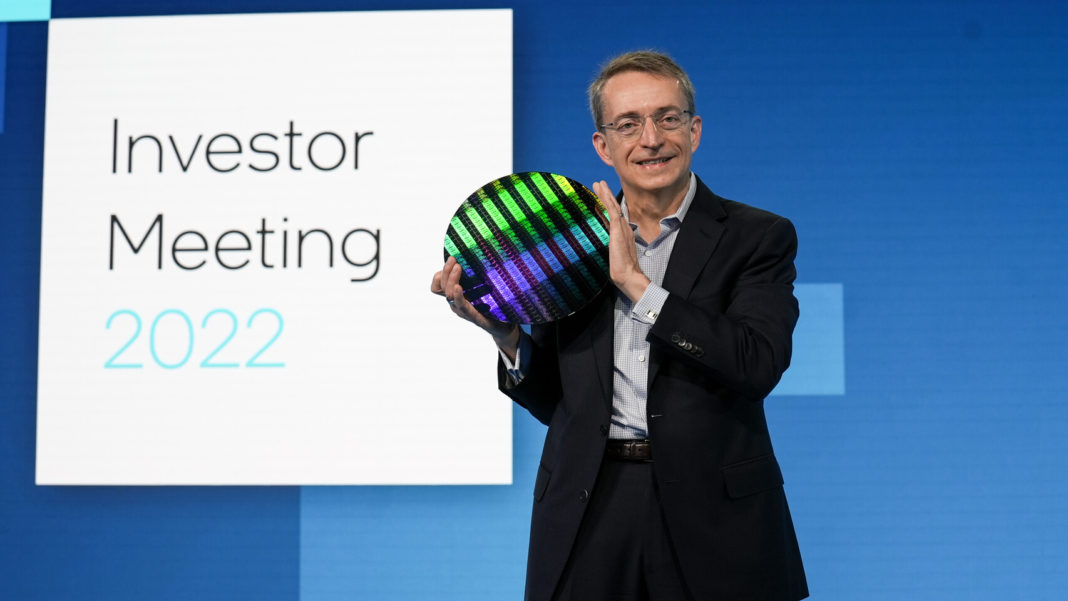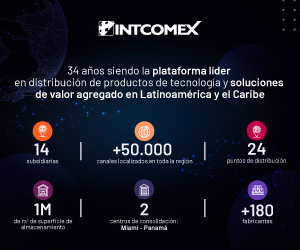Intel details plans to lead in traditional markets, disrupt high-growth emerging markets
Intel hosted its 2022 Investor Meeting and outlined key elements of the company’s strategy and path to long-term growth during an era of unprecedented demand for semiconductors. The event included a series of announcements at both a corporate and individual business unit level, including more details of the company’s Smart Capital strategy, product roadmaps across its new reporting segments and key execution milestones.
The continued proliferation of technology is driving sustained, long-term demand for semiconductors, creating a $1 trillion market opportunity by 2030,” said Pat Gelsinger, Intel chief executive officer. “With that opportunity in mind, today we outlined our strategy and roadmap for accelerating to 10%-12% year-over-year revenue growth by 2026 by doubling down on innovation, driving even deeper collaboration with our customers and partners, and leveraging our core strengths to successfully grow traditional markets and disrupt new ones. Our goals are ambitious, but I’m confident we have the right strategy and right team to achieve them and to deliver long-term value for our shareholders.”
Full-Year 2022 Outlook
At today’s event, Intel provided its outlook for the full-year 2022. For 2022, Intel expects revenue of $76 billion; non-GAAP gross margin of 52%; non-GAAP EPS of $3.50; and net capital expenditures of approximately $27 billion. Adjusted free cash flow is expected to be negative $1 billion to $2 billion as the company ramps its investments to accelerate long-term growth.
The company’s guidance includes both GAAP and non-GAAP estimates. Full reconciliations between these GAAP and non-GAAP measures are included below.
| Full-Year 2022 | GAAP | Non-GAAP |
| Revenue | $76.0 billion | $76.0 billion^ |
| Gross margin | 49.6% | 52% |
| Earnings per share | $3.55 | $3.50 |
| Net capital spending1 | $27.0 billion | $27.0 billion^ |
| Adjusted free cash flow | N/A | ($1-2 billion) |
Long-Term Profitable Growth
Longer term, Intel expects year-over-year revenue growth moving to the mid- to high-single digits in 2023 and 2024, with year-over-year growth ramping to 10%-12% by 2026.
“We expect to deliver the growth targets outlined today through our reinvigorated focus on large and growing markets, investments in our technology roadmap, and disciplined fiscal approach,” said David Zinsner, Intel chief financial officer. “At the same time, we will combine financial discipline with a steady focus on revenue growth, gross margin expansion and strong cash flow. This approach gives us confidence in our ability to execute our plan and deliver compelling shareholder returns.”
As Intel’s investments begin to deliver faster growth, gross margins are expected to expand from the 51%-53% range over the next three years to 54%-58% in 2025 and 2026. In addition to faster revenue growth, the company sees several opportunities to expand gross margin by 2025. These include executing the company’s investments to deliver five nodes in four years to regain technology leadership, better sales mix of leadership products and scaling of higher-growth emerging businesses. Intel also intends to maintain strong cost discipline to identify further cost efficiencies to drive gross margin expansion and deliver leadership products with best-in-class cost.
| Investment Phase Model 2023-2024 | Non-GAAP |
| Revenue growth YoY | Mid-to-High single digits^ |
| Gross margin | 51-53% |
| Operating expense2 | 28-30% |
| Net capital intensity3 | ~35% |
| Adjusted free cash flow2 | ~neutral |
| Long-Term Model 2025-2026 | Non-GAAP |
| Revenue growth YoY | 10-12%^ |
| Gross margin | 54-58% |
| Operating expense2 | 25-27% |
| Net capital intensity3 | ~25% |
| Adjusted free cash flow2 | ~20% |
Intel’s Smart Capital Strategy
Underpinning Intel’s long-term growth plan is its Smart Capital strategy, which aims to help fund growth while creating flexibility and delivering higher returns on investments. Under the Smart Capital strategy, Intel intends to employ a disciplined approach to its investments and leverage government incentives, customer participation and other creative partnerships as offsets to capital spending. This will allow the company to adjust quickly to opportunities in the market and gain share while managing its margin structure and capital spending. Key elements of Smart Capital include:
- Smart Capacity Investments: Intel is aggressively building out “shells,” which are the smaller portion of the overall cost of a fab but have the longest lead time. Having available shell space gives the company flexibility in how and when it brings additional capacity online based on milestone triggers such as product readiness, market conditions and customer commitments.
- Government Incentives: Intel is continuing to partner with governments in the U.S. and Europe to advance incentives for domestic manufacturing capacity for leading-edge semiconductors, as it builds advanced fabs that secure domestic supply and provide opportunities for bolstering economic growth in local communities.
- Customer Commitments: Intel Foundry Services is working closely with potential customers, and some have indicated willingness to make advance payments to secure capacity. This provides Intel with the advantage of committed volume, de-risking investments while providing capacity corridors for our foundry customers.
- Infrastructure Agreements: Intel is also exploring innovative ways to optimize its investments in new fab projects. Today Intel announced a memorandum of understanding (MOU) with Brookfield Asset Management (Brookfield), one of the largest global investors in real assets, whereby Intel and Brookfield will explore project finance options to help fund new Intel manufacturing sites and certain related renewable power opportunities. This would increase Intel capital flexibility and help accelerate Intel’s manufacturing build-out. This is a creative, first-of-a-kind model for the industry that will allow Intel to fully leverage a premier financial institution to scale its capacity in a capital-efficient manner. The agreement also shows how government incentives can help to increase private capital for semiconductor manufacturing expansion.
- External Foundries: Finally, Intel intends to make effective use of external foundries, leveraging some of their unique capabilities to help deliver leadership products.
Together, Intel’s Smart Capital actions provide flexibility, reduce its overall gross capital needs and act as a tailwind to gross margin.
Plans to Lead in Traditional Markets and Disrupt High-Growth Emerging Markets
Intel today provided substantial updates across its six distinct but complementary business units that enable the company to capture growth in both its large traditional markets and high-growth emerging markets. This includes planned growth in the client, data center, network and edge markets based on increasingly competitive roadmaps, and the ability to disrupt important emerging markets with focused investments in accelerated compute and graphics, foundry, mobility and auto. In the auto market, the company remains on track to take Mobileye public in the U.S. in mid-2022 via an initial public offering, where Intel will remain the majority owner of Mobileye. This structure gives Intel multiple engines for growth and an inherent flexibility in how it invests. Intel’s new reporting segments, which will be presented beginning with its first-quarter 2022 results, will also provide shareholders with more transparency, giving them direct visibility into the company’s progress in each area.








